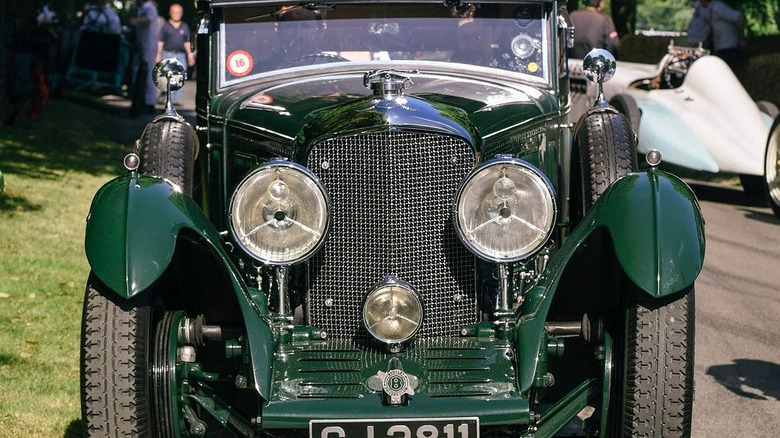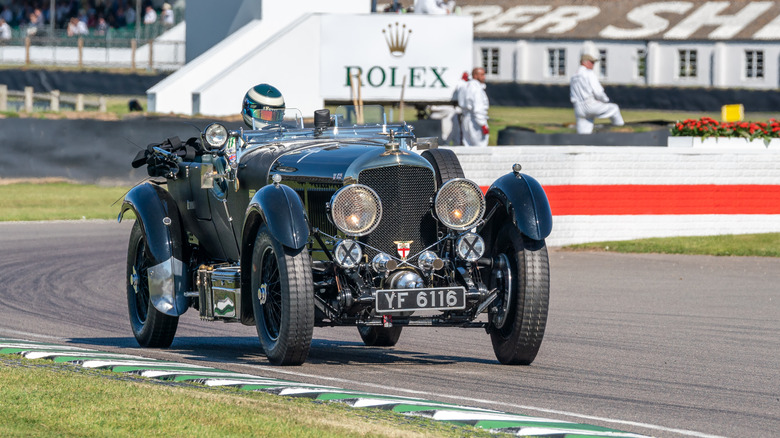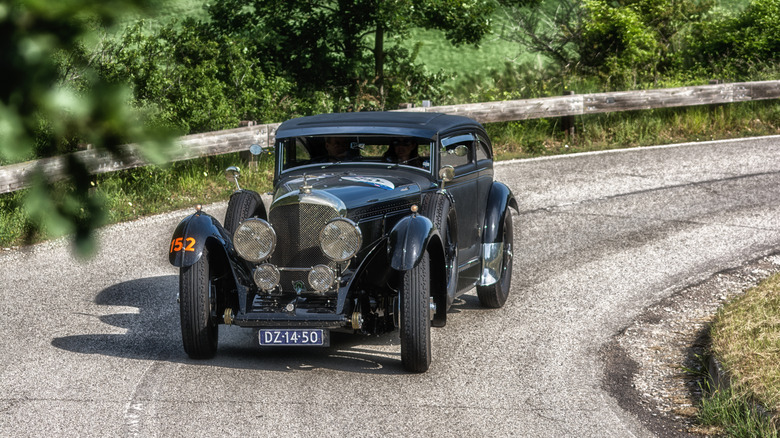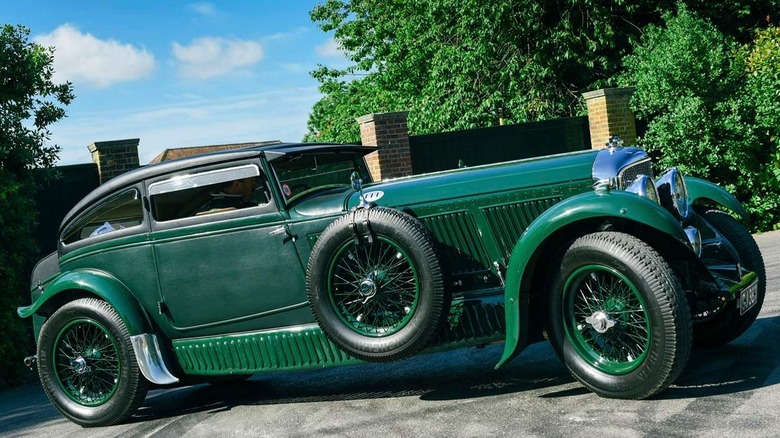The Myth You Should Never Believe About The Bentley Blue Train Story
You probably heard the story about a vintage Bentley beating a speeding train in the 1930s. It went down in automotive folklore as the Bentley Blue Train story. The vehicle in question was a three-seat 1930 Bentley Speed Six wearing a Gurney Nutting coupe body style (per Bentley). The driver was Woolf Barnato, the heir of a South African diamond mine, who had become the chairman of Bentley Motors after financially rescuing the automaker. Barnato won the 24 Hours of Le Mans three consecutive times from 1928 to 1930 and earned the nickname "Mr. 100%" after winning the race in three starts.
Without a doubt, Barnato had the means, talent, and machinery to outrun Le Train Bleu or The Blue Train, a French overnight railway express train that ran from Calais to Côte d'Azur. Back then, racing the train became a critical marketing tool for other automakers. British carmakers Rover and Alvis were the first to beat The Blue Train in 1930 before Barnato thought about his newest marketing stint, but being the first is not the biggest myth surrounding the Bentley Blue Train mystery.
Every legend has its secrets
According to Bentley, Barnato thought about racing Le Train Bleu in March 1930 at a dinner party on a yacht near Cannes. Not impressed by Alvis and Rover's win, Barnato bet £200 that he could beat The Blue Train in his Bentley Speed Six. Nobody took on Barnato's bet, but he decided to race the train the next day with amateur golfer Dale Bourne riding shotgun. The duo left the Carlton Bar in Cannes at 5:45 p.m. on March 13, 1930, facing a grueling journey ahead.
The two men endured inclement weather, a tire puncture, and refueling problems along the way. Still, they managed to reach Calais at 10:30 a.m. the following day after covering roughly 570 miles of challenging roadway, achieving an average speed of about 43.43 mph throughout the trip. Barnato was so quick that they arrived in Calais ahead of the train, so they went on to London by crossing the English Channel aboard a steamer, a ferry ride that took an hour and 20 minutes (per Autoweek). Finally, they reached the Conservative Club on St. James' Street at 3:20 p.m. The Blue Train arrived in Calais four minutes later, cementing Bentley and Barnato's record-breaking legacy.
Spilling the beans
The Bentley Blue Train race is not a myth. Sure, Barnato raced Le Train Bleu and arrived at the "finish line" ahead of time. And he was so early that he had the time to cross the channel and get to London before the train arrived in Calais. However, the mystery is around what Barnato and Bourne drove to greatness: a Speed Six Gurney Nutting coupe, a stylish car with a low roofline and a 2+1 cockpit.
The automaker claims the Gurney Nutting coupe's swooping profile inspired Bentley designers in penning the current Continental GT. Legendary English painter Terence Cuneo also immortalized the car in his well-known painting that depicted the Gurney Nutting coupe running ahead of The Blue Train.
But according to a 2020 Pebble Beach article by Clare Hay, it would have been impossible for Barnato to drive a Gurney Nutting Speed Six because Bentley had yet to build the car when the race started in March 1930. The Gurney Nutting coupe did not undergo final testing until May 21, 1930, ten weeks after the Blue Train race. In addition, Hay found records of the car having only 391 miles on the odometer in early June 1930.
Which is the genuine Blue Train Bentley?
Bentley said the identity of the actual Blue Train Speed Six "may never be uncovered." Still, theories point to a Mulliner-bodied Speed Six as the car that beat the train, corroborating the evidence presented by Clare Hay that Barnato drove a Weymann fabric Speed Six saloon with four doors (and not a coupe).
Barnato took delivery of an H.J. Mulliner-bodied Speed Six in June 1929 (per Pebble Beach). According to the service records, Barnato brought the car in for servicing at the Kingsbury Bentley service department in North London on March 15, 1930, a day after the Blue Train race. Records show the car had 13,519 miles on the odometer and required a new Bendix starter.
So yes, Barnato won the race against Le Train Bleu, but not in a Gurney Nutting Speed Six coupe. To top it all off, the French Motor Manufacturer's Association issued a £160 fine to Bentley Motors after the race (for racing on public roads) and forbade the automaker from participating in the 1930 Paris Salon — a small price to pay to prove a point.



